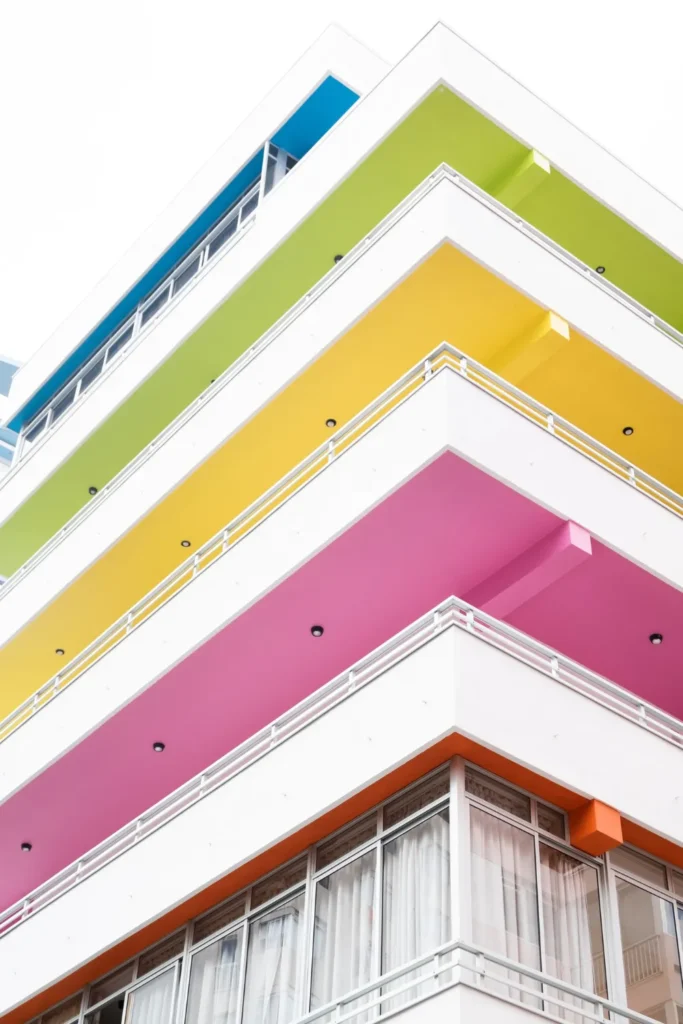When it comes to enhancing your home’s aesthetics and protecting its structure, exterior painting plays a crucial role. A well-executed paint job not only adds value but also contributes to the overall curb appeal. In this comprehensive guide, we’ll explore the importance of exterior painting, how to choose the right colors, essential preparation steps, and best practices for achieving a beautiful and durable finish.

Understanding the Value of Exterior Painting
Exterior painting serves as both an aesthetic enhancement and a protective measure for your home. Beyond mere appearance, it plays a crucial role in safeguarding against weather damage and extending the lifespan of your property. Understanding its value is key to maintaining your home’s beauty and structural integrity.
Curb Appeal and First Impressions
Curb appeal matters more than you might think. Imagine a potential buyer or a guest approaching your home. The exterior sets the tone for what lies beyond. A fresh coat of paint instantly enhances the overall look, creating a positive first impression. Whether you’re planning to sell your home or simply want to enjoy it, investing in exterior painting pays off by elevating its aesthetic appeal and making a lasting impression on visitors.
Protection Against Weather Elements
Your home’s exterior faces constant exposure to the elements—rain, snow, UV rays, and temperature fluctuations. Properly painted surfaces act as a protective shield, preventing moisture from seeping into wood, stucco, or siding. When surfaces are well-maintained, they are less prone to rot, decay, and other weather-related damage, thereby safeguarding the structural integrity of your property and reducing the need for costly repairs.
Choosing the Right Paint Colors
When it comes to revamping your home’s exterior, choosing the perfect paint colors can be both exciting and daunting. Your home’s exterior color scheme plays a significant role in its overall aesthetic appeal and can even affect its resale value. To help you navigate through this crucial decision-making process, let’s explore three essential factors to consider when selecting the right paint colors: architectural style, neighborhood aesthetics, and personal preference.
Architectural Style
The architectural style of your home serves as the foundation for determining suitable paint colors. Whether your home boasts a classic Victorian design or exudes modern minimalism, selecting colors that complement its architectural features is key. Traditional homes often shine with timeless color palettes, including warm neutrals or muted earth tones, while contemporary residences may embrace bold and vibrant hues for a striking visual impact.
Neighborhood Aesthetics
While you want your home to stand out, it’s essential to consider the overall aesthetics of your neighborhood. Take a stroll around your block and observe the prevalent color schemes among neighboring houses. While you don’t need to blend in entirely, choosing colors that harmonize with the surrounding homes can enhance the cohesive look of the neighborhood while still allowing your home to make a statement.
Personal Preference
Your home should be a reflection of your personality and style preferences. Consider colors that resonate with you and evoke the ambiance you desire for your living space. Whether you’re drawn to serene blues for a calming effect or vibrant reds for a bold statement, trust your instincts and choose colors that make you feel at home.
Preparing for Exterior Painting
Before diving into the exhilarating world of exterior painting, it’s crucial to lay down a solid foundation by preparing your home’s surfaces adequately. This preparatory phase sets the stage for a smooth and successful painting process, ensuring lasting results that will stand the test of time. Let’s explore the essential steps involved in preparing for exterior painting:
Inspection and Repairs
Before embarking on your exterior painting project, a comprehensive inspection is essential to identify any underlying issues that could compromise the paint job’s integrity. Look for signs of wear and tear such as cracks, peeling paint, or rotting wood. Addressing these issues promptly not only ensures a smoother painting process but also prevents further damage to your home’s exterior. For more complex repairs, consulting with professionals can provide expertise in maintaining the structural integrity of your property.
Cleaning Surfaces
Thoroughly cleaning the exterior surfaces of your home is vital to ensure optimal paint adhesion and longevity. Utilize appropriate cleaning solutions or detergents to remove dirt, grime, and mildew buildup effectively. A pressure washer can be an efficient tool for this task, but it’s crucial to exercise caution to prevent damage to sensitive surfaces. Taking the time to properly clean the surfaces sets the foundation for a successful and durable paint job.
Surface Priming
Priming the surfaces before painting is a crucial step that should not be overlooked. A high-quality primer helps to create a uniform surface, enhances paint adhesion, and improves durability. Choose a primer specifically formulated for your surface type and follow manufacturer instructions for application. Proper priming ensures that the paint adheres evenly and provides long-lasting protection against weather elements. Skipping this step can compromise the quality and longevity of your paint job, leading to premature deterioration.
Best Practices for Exterior Painting
With your home’s surfaces prepped and primed for painting, it’s time to tackle the exciting part—applying the paint! However, before you dip your brush into that vibrant hue, consider these best practices to ensure a professional-quality finish:
Weather Considerations
Pay close attention to the weather forecast before scheduling your exterior painting project. Ideally, choose a time when temperatures are moderate, humidity levels are low, and rain is not in the forecast. Painting in optimal weather conditions ensures proper paint adhesion and drying, resulting in a flawless finish.
Proper Tools and Techniques
Invest in high-quality painting tools and materials to achieve professional results. From brushes and rollers to sprayers and ladders, using the right tools for the job can make a significant difference in the efficiency and outcome of your painting project. Additionally, familiarize yourself with proper painting techniques, such as feathering edges, to achieve smooth and even coverage.
Safety Precautions
Last but certainly not least, prioritize safety throughout the painting process. Use sturdy ladders or scaffolding and take precautions to prevent falls or injuries. Wear appropriate protective gear, including goggles, gloves, and masks, especially when working with chemicals or at heights. Additionally, be mindful of nearby power lines and other hazards to ensure a safe and successful painting experience.





